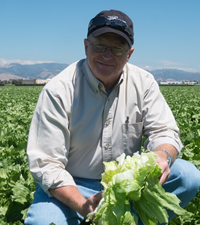
Bob Strate, COO of TaMolly’s Mexican Restaurants, affectionately refers to Beyond Celiac as his partners in “the attack of the gluten monster.” He’s super passionate about keeping the gluten-free community safe in all of his restaurants and we are excited to share this Q&A with you.
What prompted you to seek GREAT Kitchens training?
Understanding the basics of the gluten-free diet is not enough. Knowing the importance of “doing this right” was the foundation that all of our plans were based on. The  decision to use Beyond Celiac as our partner in achieving a staff competent in gluten-free food preparation was easy. We knew we didn’t have time to reinvent the process – instead we used someone that was credible and had the support and materials to help us be confident in our new gluten-free plans. Gluten-free is not a “Special of The Week.” It is something that greatly impacts many of our guests – and we have a passion to gain their trust because we care enough to “do it right.”
decision to use Beyond Celiac as our partner in achieving a staff competent in gluten-free food preparation was easy. We knew we didn’t have time to reinvent the process – instead we used someone that was credible and had the support and materials to help us be confident in our new gluten-free plans. Gluten-free is not a “Special of The Week.” It is something that greatly impacts many of our guests – and we have a passion to gain their trust because we care enough to “do it right.”
Is your kitchen entirely gluten-free? If not, how do you prevent cross-contact from occurring?
Our kitchens are not entirely gluten-free. Cross-contact is the greatest challenge in a successful gluten-free effort. It’s not as simple as using a different grill or spatula. Preventing cross-contacts begins on the farm where our ingredients start in harvesting, storage, packing and shipping, and ends at the table when the finished entree is served to our guest. We select suppliers that understand the importance of proper handling of each ingredient. We travel to many of the growers and shipping facilities to ensure they are knowledgeable of proper food handling and have the resources to avoid accidents in cross-contact. Our visits help emphasize our passion in getting clean ingredients, not just for our gluten-free guests, but for those with other food allergies, like peanuts (which we are free of as well).
We choose to not make our flour tortillas “in-house,” which eliminates most of the hazard of airborne contaminants. Dedicated gluten-free fryers are essential, as well as color-coded ladles for the few ingredients which do contain gluten. Pan liners, gloves, dedicated work stations and color-coded utensils are all great tools, but our greatest tool is the fact that our managers are the only ones that prepare a gluten-free meal and serves it directly to the gluten-free guest.
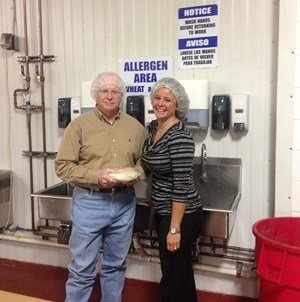
Bob visiting a vendor to ensure their products
are in fact gluten-free.
What would you say are “hot spots” in the kitchen that gluten-free diners should be aware of?
In my opinion, the “hot spots” that have the greatest potential cross-contact points are the kitchen working surfaces. From the prep area, where raw ingredients are chopped, blended, and prepared, to the cutting boards where a dish is in final prep for serving. Other significant hot spots are fryers, which must remain clean and dedicated to gluten-free foods only.
I’d recommend reading the menu’s gluten-free statement, which is usually posted in fine print on the gluten-free menu. If there are no clear statements about “dedicated” fryers or other key statements to indicate an understanding of the nature of “cross-contact,” then you need to question the experience of the establishment.
Are there certain menu items that should trigger the recognition of a “hot spot?”
In our family we have three members who have a known non-celiac gluten sensitivity (‘gluten sensitivity’), so when we dine out we always look at menu selections prepared directly on a restaurants “flat grill” or “char-broiler.” These pieces of equipment are common in most all casual dining restaurants and are impossible to clean between entrées to the level that would remove gluten, and too expensive to have dedicated equipment for most operations. If menu selections are of the nature that would indicate these meals would normally utilize methods of grilling on one of these pieces of equipment.
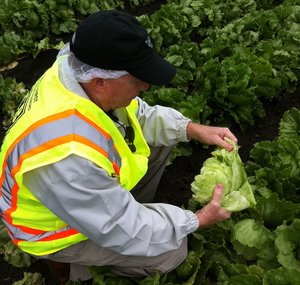
Bob checking out lettuce on a farm
in Monterey California
If a host/hostess or waiter/waitress seem unfamiliar with celiac disease, gluten sensitivity and gluten-free needs, what action would you recommend that a gluten-free diner take?
To me, this would indicate foremost that gluten-free diners are not a normal part of the daily business, unless it is in its initial period of roll-out. Don’t miss a good opportunity by pre-judging the establishment. Allow the manager to be the key in your decision to eat or move on.
One mistake we made early on is focusing all the energy in training and implementing the gluten-free process through the managers at each location and not exposing servers or other dining room staff to the extensive levels as we did managers and kitchen staff. I thought it was so important to get the process correct and that management and cooks are the only ones directly that ever touch a gluten-free meal, and therefore, we neglected to cover important details early. Learning from that experience, we now have an annual meeting every August with our entire staff, at each of our locations, on the gluten-free service we offer as well as updates concerning any allergen experience.
What’s the best approach for reaching out to a restaurant to determine if the establishment can accommodate gluten-free needs?
First, go to the company’s website and confirm their performance with social media. It’s important to evaluate comments posted for accuracy and the date a post was made. Once you confirm it is not just another half-done program, check with the manager by phone on suggestions and let them answer questions. This experience is all about confidence in the staff! If you can feel comfortable with the social media, gluten-free menu on the website, and manager conversation, then enjoy the experience.
What ways have you adapted your menus or ingredients to expand your gluten-free options in your establishment?
Due to the nature of our Mexican offering, we had a head start on the gluten-free experience over someone in the donut business or the Italian food business, for instance. We did have to make some ingredient changes to avoid hidden barley, wheat, and rye components. Because we “cook daily from scratch,” the process was pretty easy. Using more corn starch instead of flour as thickening agents in sauces is just one example of the changes.
In 2012, we introduced a new fast casual-style restaurant into the Dallas, Texas market called “Chiladas.” Having the knowledge from the Beyond Celiac GREAT Kitchens training and using all resources available to us, from our chef to our primary food vendor, U.S. Foods, we were able to design the new menu, with gluten-free options, for this new concept and created a 75% gluten-free menu. This was a much easier task than converting an established 28 year old restaurant concept to achieve broad gluten-free offerings.
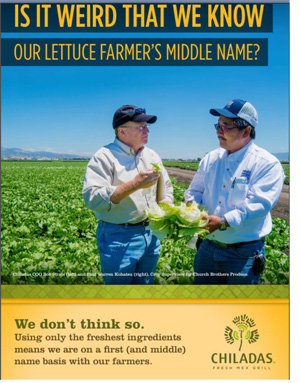
Bob Strate with lettuce farmer
Paul Warren Kohatsu
Is there a particular story that comes to mind that illustrates the impact you have by offering gluten-free food safely?
There are so many positive stories from this experience, so it’s difficult to pick one. The most gratifying part of the process came unexpectedly after most of the work was done. In our first detailed training session with our “Front of House Staff,” I realized the significant positive impact that this had on our team members. Our servers gained a greater sense of purpose to their daily routine that was unexpected. The guest experience from so many “heartfelt positive comments” made coming to work more exciting for those in direct contact with our gluten-free guests. We understand that the confidence and trust shown by safely offering a gluten-free alternative to the smaller secondary markets is one that empowers our staff to be even more diligent in doing gluten-free right every time we are asked to.
How can consumers persuade other restaurants to participate in gluten-free training?
This is a real big point for me. I encourage diners that are searching for the gluten-free experience to open into more areas, to be even more positive in their social media postings. Gluten-free diners need to be encouraging to any restaurant to expand their offerings to include gluten-free. It is going to grow if the guests that need the options are very supportive to those who go to the efforts to do it right.
One last note on this topic is that if you have any negative feedback from a poor experience, attempt to resolve directly with the management of that facility, rather than retaliate publicly on social media. There will be mistakes; it happens. It’s important to understand that you could be the link between that restaurant and educating them on safe gluten-free food preparation. It can be a win-win!
What are you particularly proud of when it comes to your gluten-free program?
We are most proud of the support and noticeable growth in many underserved markets. We are encouraged by the social media’s positive support which we read and respond to individually. I’m proud of our staff who knows the importance of each gluten-free meal served, in that someone trusts them to either make their day rock with great/safe food, or they could make their next few days horrible. It’s the trust that is shown that we don’t take for granted.
What is unique about the way you address gluten-free needs? What can others learn from?
The one thing that we stress is that a manager is the only one that touches a gluten-free meal. Regardless of what’s going on, the managers know that if a gluten-free order hits, they must stop, wash hands, put new gloves on, and make it. My daughter-in-law, who also has gluten sensitivity, suggested directly marking the plate somehow to bring more confidence to the diner. We use a disposable plastic marker for all gluten-free dine-in meals and place bright yellow stickers marked gluten-free on all to-go packaging.
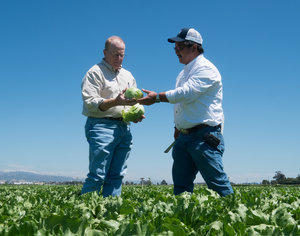
Tell us a little bit about your restaurant.
TaMolly’s is a family friendly casual restaurant group serving Texas, Arkansas, and Louisiana with eleven locations. The TaMolly’s operation has been around for over 30 years using traditional and heritage Mexican dishes, cooked daily from scratch beginning at 7:30 each morning. We have great vendor support with our US Foods partners and are able to keep in touch with the actual farmers who grow the produce for our restaurants. Our food would be categorized as Tex-Mex flavors with bright atmospheres and a family-friendly staff. The markets we serve have populations of 30,000 to 75,000. We recently started a fast casual chain in the Dallas market called ‘Chilada’s Fresh Mex Grill’ with two locations.
Interested in learning more about the gluten-free menu at Chilada’s Fresh Mex Grill? Download it here.
Why are you, personally, in the restaurant business?
I am not real good at anything else and I enjoy people. We are in the entertainment business daily have the chance to perform for 7,000 guests, hoping to live up to their expectations is rewarding in many ways. Meeting the needs of others is a healthy way to make a living, that I feel will add years to one’s life.


